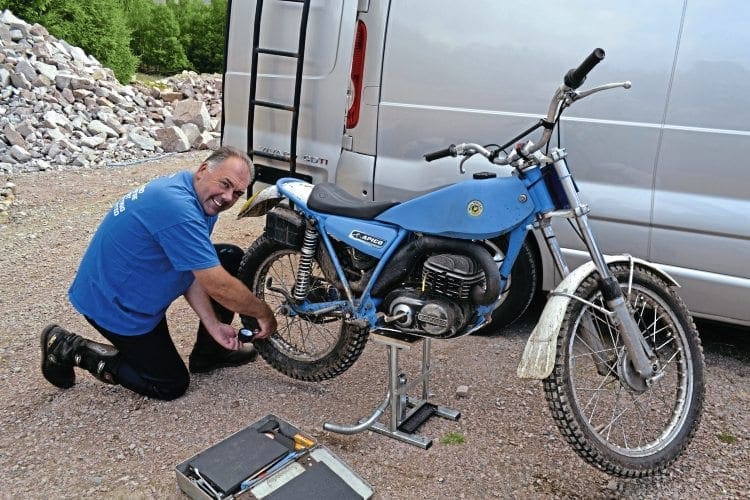Technospeak crops up in many aspects of our lives.
My column this issue was going to be about the insides of a Montesa 200 engine, which belongs to a relative of mine who was a bit good on a trials bike in the Fifties (he’s got the rest of the bike as well but that’s not in too bad a condition compared with the engine).
Then, just as I was finely crafting the words, in popped an email from John Dickinson with his column attached. Having seen a photo of it, John also mentioned the Montesa, mainly because he couldn’t believe what he was seeing.
Now, John is actually a mechanic, whereas I’m not, and I’m sure the technical jargon which peppered his email is official language for use when a qualified craftsman is presented with something suffering the attentions of non-qualified people.
Technical jargon is perfectly logical and understandable to those within the circle where it’s used but at best it’s amusing and at worst unintelligible to those who aren’t.

For instance, joining in on a conversation on technical terms between a number of motorcycle magazine colleagues, I chucked “I once saw a lad get a pig in a manhole…” into the mix. The expressions were priceless and had that been the era of camera phones then the internet would have been swamped.
One colleague who, like me, had some experience of the construction industry, was shocked for a different reason to the non-construction based listeners. He knew the ‘pig’ referred to a course of bricks that don’t line up.
I suppose we’re all guilty of using jargon, especially when talking to others in the same circle of interest or job and there will be few people reading this who wouldn’t understand such abbreviations as ‘bhp’ ‘ohv’ or ‘ohc’ to give three examples.
Nor would ‘stroker’ for two-stroke engine or ‘thumper’ for big four-stroke single engines cause any raised eyebrows for those of us involved with older motorcycles – even those who share our lives, if not the passion for older dirt bikes, find themselves understanding more than they realised they did.
However, it was just as well we were all grown men when I capitulated and took the bottom end to an engineering mate who is also a Montesa enthusiast. Having beaten all my attempts to remove it and exhausted my small supply of cog and sprocket pullers, common sense kicked in and expert help was sought before damage was done.
At the engineering works there were other phrases and words in use, words which described how unusable the sprocket was. Not only that but it soon became obvious there was no way I could have removed it. Once words such as ‘heat’ and ‘gas bottle’ came in to play the task became big league.
till the pesky little blighter refused to budge… what I did know was the sprocket is keyed onto the shaft, what I didn’t know was the shaft is tapered.
What none of us knew until we set to with an angle grinder and cut it off, was the key had sheared and allowed the sprocket to spin on the shaft which had friction welded the thing in place. Once the angle grinder had done its work this became obvious.
At least the sprocket issue was relatively easy to resolve, the piston not so… it seems everything other than a piston is available, but without a piston there is no point attempting anything else.
Mixing and matching parts from a variety of sources isn’t unusual in our world and a whole range of new technical language comes into play when this is attempted.
In the case of British four-strokes, sorting alternative pistons isn’t difficult or at least not too difficult. There’s the bore in the barrel which is effectively a tube the piston slides in. It can be bored out a little if, say, a piston of the right diameter isn’t available but there’s one close to it.
I’m not talking about official oversizes here as these are often listed in handbooks for various machines, what I’m speaking about is a different model from the same maker or a different maker altogether.
When doing this, technical terms such as ‘liner wall thickness’ and ‘deck height’ come into play. Generally speaking, a liner can cope with a little extra bored from it and if the deck height – the dimension from the gudgeon pin to the piston crown – isn’t quite right, the length of the barrel can be adjusted. Of these two procedures the former will work on a two-stroke but the latter isn’t so easy.
A visit to the recent Stafford show didn’t throw up any pistons but I did come away with a good deal of information so it was well worth the trip as always.
Tim Britton


